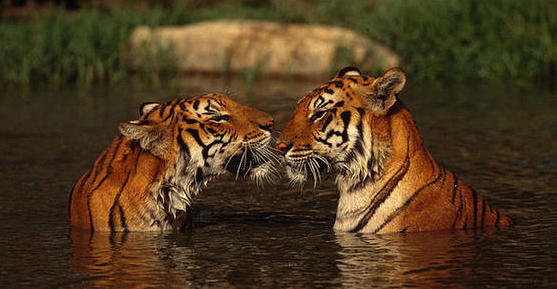Threats to Tigers
Deliberate and large-scale illegal hunting of tigers for their body parts has seen tigers completely wiped out in several reserves set up to protect them.
Traders are even storing dead tigers for their parts, which increase in value as numbers of live tigers fall.
The continued demand for tiger parts is fed by poaching of tigers throughout their range.
In India, where lack of funds prevents anti-poaching measures, tigers have been exterminated from some tiger reserves.
In Indochina, poaching is so pervasive that it has created thousands of hectares of forests bereft of all wildlife.
And in Sumatra, at least 40 Sumatran tigers were poached per year between 1998 and 2002 to supply Indonesian and international markets for tiger skins and body parts. The total population of this tiger subspecies is estimated at fewer than 400 individuals.
|
Quick Facts: |
|
? All international commercial tiger trade has been banned since 1987, under The Convention on International Trade in Endangered Species of Wild Fauna and Flora (CITES).? ??National trade in tiger parts is subject to each country's laws. ??Illegal trade in tiger parts is often run by organized criminal networks. ??China’s tiger trade ban since 1993 has been an overwhelming success in reducing trade and demand.? |
 0
0 







